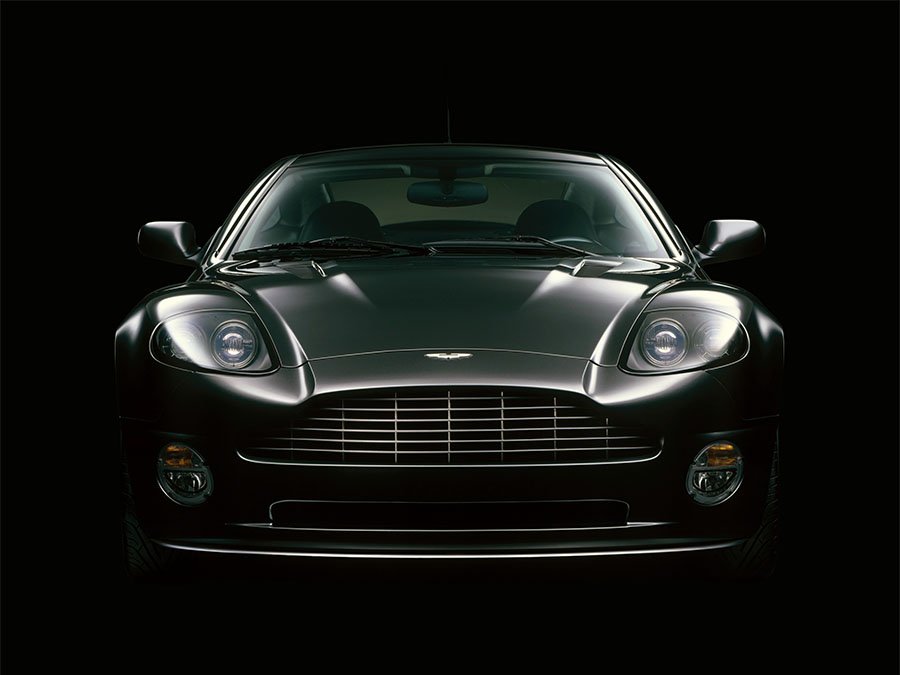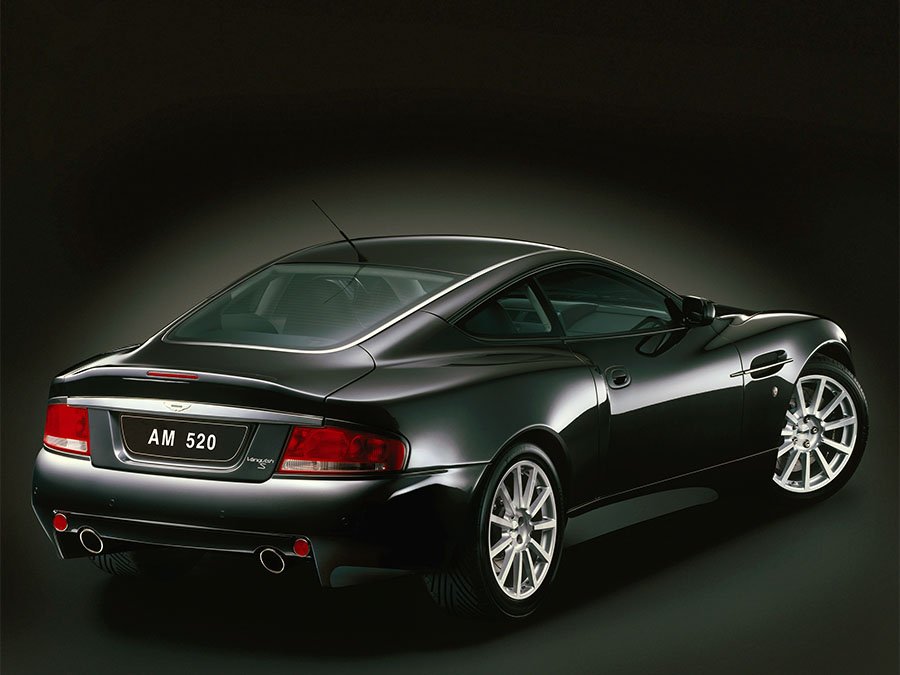Guide: Aston Martin V12 Vanquish S - a Historical & Technical Appraisal
/BACKGROUND
Having relied on its famed V8 for around three decades, advancing technology and tightening emissions legislation meant Aston Martin finally had to create a new flagship power unit during the late 1990s.
The resultant 5.9-litre V12 made its motor show debut in a design concept dubbed Project Vantage unveiled at the Detroit Motor Show in January 1998. 14 months later, the highly anticipated power unit found itself fitted to a revamped and more expensive version of the DB7 (the DB7 V12 Vantage) presented at the Geneva Motor Show in March 1999.
The pricier but faster and more powerful DB7 V12 Vantage effectively replaced the mid-range Virage line and resulted in demand for the old straight six-powered DB7 drying up practically overnight.
Alongside the DB7 V12 Vantage at Geneva, Aston Martin also debuted the last hurrah for their old V8 engine: the range-topping supercharged Vantage Le Mans which was available in both V550 and V600 trim.
Two years later it was all over for the V8 engine when Aston dropped a further uprated version of the V12 into a highly anticipated flagship for the 21st century: the V12 Vanquish.
With its sensational styling, lusty power unit and superb built quality, demand for the Vanquish exceeded Aston Martin’s expectations and a little over 1500 cars were built in the first three years of production.
On its initial launch, the Vanquish had gone head-to-head with Ferrari’s ageing 550 Maranello and 456M. The 550 was subsequently replaced by the updated but ugly 575M in 2002 which, like the Vanquish, could now be specified with an F1-style paddle shift transmission. Significantly though, Aston did not provide a traditional manual gearbox option whereas Ferrari did.
Nevertheless, the Vanquish enabled Aston Martin to more or less pull level with Ferrari in terms of sales.
Three-and-a-half years after the Vanquish was unveiled, Aston Martin presented a further improved replacement when the V12 Vanquish S debuted at the Paris Motor Show in September 2004.
ENGINE / TRANSMISSION
Arguably the most significant updates applied to the Vanquish S were engine-based; power and torque increases of 13% and 6% respectively were achieved thanks to a host of uprated parts.
There were new cylinder heads with re-profiled fully machined inlet ports, new hot-forged connecting rods to handle the increased cylinder pressure and combustion chambers with revised profiles.
New fuel injectors and spark plugs were also fitted, the Visteon PTEC engine management system was re-mapped and the compression ratio was upped from10.5:1 to 10.8:1.
All told, this equated to peak output figures of 520bhp at 7000rpm and 425lb-ft at 5800rpm.
For comparison, the outgoing Vanquish pumped out 460bhp at 6800rpm and 400lb-ft at 5500rpm.
A new final drive ratio (raised from 3.69:1 to 4.3:1) meant acceleration times were unchanged but top speed got a useful boost.
Otherwise, the Vanquish S motor was more or less unchanged.
The result of a collaboration with parent company Ford and Cosworth Engineering in Northampton (who also handled assembly), the Vanquish power unit was a normally aspirated all-alloy 60° V12 with dual overhead camshafts, four valves per cylinder and wet-sump lubrication.
Displacement was 5935cc thanks to a bore and stroke of 89mm and 79.5mm respectively.
Compared to the DB7 V12 Vantage, the Vanquish motor came in what Aston Martin dubbed Stage 2 tune. Lighter, stronger and more powerful than the DB7 unit, it featured repositioned inlet manifolds to achieve an even air flow into the engine and balanced breathing between all cylinders. The exhaust catalysts were close-coupled to the engine for more rapid heat up when starting from cold.
The camshafts, valve gear and crankshaft were also uprated over the DB7; a considerable weight reduction was achieved thanks to the 6kg lighter forged crankshaft, the 4kg lighter centrally mounted cast aluminium inlet manifolds and 5.5kg lighter hollow forged camshafts.
Overall, the Vanquish motor weighed 18kg less than the DB7 Vantage unit while in terms of throttle response, a full 12kg of rotating inertia had been removed.
Coupled to the engine was a six-speed automated manual gearbox developed in conjunction with Magnetti Marelli. F1-style paddles were mounted on the steering column and shift times required just 250 milliseconds.
The two primary gearbox modes were Select Shift Manual (SSM - where the driver shifted gears manually using the paddles) and Auto Shift Manual (ASM - where gear selection was automated according to engine and road speed).
Both the manual SSM and automatic ASM modes also had a Sport setting which enabled the fastest possible shift times and, in ASM mode, allowed the engine to rev higher before upshifts.
Transmission was through a drive-by-wire throttle, single-plate clutch and limited-slip differential.
CHASSIS
Every Vanquish S came equipped with the Sports Dynamic Pack that had been introduced as an option for the original variant at the Geneva Motor Show in March 2004. This included shorter springs and revised dampers (that resulted in a 5mm lower ride height), new front uprights, a quicker steering rack and bigger 378mm elliptically-grooved front discs with six-piston calipers. The rear discs measured the same 330mm as before but were 2mm thicker.
Unlike on the previous Sports Dynamic Pack which came with light weight nine-spoke wheels, the Vanquish S received new eleven-spoke rims (19 x 9-inches up front and 19 x 10-inches at the back).
Each Vanquish was based around an aluminium monocoque supplied by Hydro Automotive Structures in Worcester. It used a combination of extruded and folded aluminium panels which were then bonded and riveted together.
The tub was bonded to a nine-layer carbonfibre tunnel that provided a light weight but extremely rigid backbone. A steel front subframe supported the engine. De-formable composite crash structures were fitted at either end and extruded aluminium side impact protection beams were housed in each door.
At 2690mm the Vanquish wheelbase was 99mm longer than the somewhat cramped DB7.
Suspension was via double wishbones with coil sprung monotube dampers all round. Front and rear anti-roll bars were also fitted.
Latest generation Teves ABS was installed along with Electronic Brakeforce Distribution and traction control.
An 80-litre fuel tank was located over the rear axle.
BODYWORK
Although the Ian Callum-designed Vanquish ranked as one of the best looking cars of its era, that didn’t stop Aston Martin making a couple of minor tweaks here and there.
A new body coloured chin spoiler added a little extra downforce and improved stability, as did the redesigned boot lid. Surprisingly, the drag coefficient went from 0.33 down to 0.32 as a result.
Instead of a front grille with nine horizontal vanes, the Vanquish S came with a six-bar grille that improved airflow to the engine.
Otherwise, the only change was a new Vanquish S badge on the tail fascia.
Aluminium body panels were used throughout. They were shaped using a patented Superform process and then bonded to the central structure.
INTERIOR
As per the exterior, not much was changed inside; initially the only difference was a leather covered instead of natural aluminium finish for the central control panel and an Aston Martin-branded steering wheel.
Behind the steering wheel was an oval instrument binnacle with three black on cream analogue gauges. In the middle was a large speedometer flanked on one side by a rev counter and the other a combined fuel / water temperature read out.
Housed on the centre console was an analogue clock and an array of switches to include controls for the ventilation and audio system.
The standard cockpit configuration saw a rear shelf located behind the seats.
Other standard equipment included drilled alloy pedals, a 13-speaker Linn audio system, electric windows, electric folding mirrors, electric seats, air-conditioning, remote central locking and rain-sensing wipers.
OPTIONS
Newly available options included folding exterior mirrors, colour keyed steering wheel trim and a leather-trimmed cup holder.
Customers could also specify satellite navigation, a telephone, a smoker pack with cigar lighter and ashtray, personalised sill plaques, a two-tone steering wheel with aluminium upper and lower inserts, two-tone leather upholstery, chrome door handles, rear parking sensors, heated front seats, a heated front windscreen, front wheel stone guards and coloured brake calipers (in red, gold or black instead of the standard graphite grey).
A 2+2 seating arrangement which added a pair of small rear seats instead of the carpeted rear shelf was another frequently specified enhancement.
WEIGHT / PERFORMANCE
Despite the extra power and torque on offer, the longer final drive ratio fitted to the Vanquish S meant there was no difference in acceleration times although top speed was now said to be in excess of 200mph (up from 196mph).
Weight rose from 1835kg to 1875kg.
2006 MODEL YEAR PRODUCTION CHANGES
For the 2006 model year (production of which started in September 2005), Aston Martin updated the Vanquish S centre console to more closely resemble that of the DB9 which had been launched at the Frankfurt Motor Show in September 2003. New switchgear was installed and the location of various controls were moved. A new Aston Martin-branded Alpine audio system was also installed and a satellite-navigation system with enlarged 6.5-inch screen became standard in most markets.
WORKS SERVICE SIX-SPEED MANUAL CONVERSION
In August 2006 Aston Martin announced the availability of a six-speed manual conversion from their Works Service department. A Tremec T-56 gearbox replaced the original Magnetti Marelli unit which also necessitated installation of a modified transmission tunnel and a steering wheel without paddle shifters.
ULTIMATE EDITION
As Vanquish production drew to a close an Ultimate Edition variant limited to 50 cars was launched in February 2007.
Each was equipped with special Ultimate Black paint and a discrete badge on the fender vent trim. Inside, Aston Martin fitted the 2+2 cockpit layout, numbered sill plaques, semi-aniline leather with coarse stitching, leather headlining and black chrome fixtures.
30 of the Ultimate Editions were left-hand drive and 20 right-hand drive.
An additional three cars to the same specification were produced for the United Arab Emirates albeit with Morning Frost White paint, a 2-seat cockpit layout, white stitching and platinum steering wheel inserts.
END OF PRODUCTION
Vanquish production was discontinued in July 2007 which also marked the end of car building at the old Newport Pagnell factory that had been in operation since 1955.
A total of 1086 examples of the V12 Vanquish S were built, 375 of which were right-hand drive.
This figure took total V12 Vanquish production to 2589 units.
Its replacement, the DBS V12, was unveiled at the Pebble Beach Concours d’Elegance in August 2007.
Text copyright: Supercar Nostalgia
Photo copyright: Aston Martin - https://www.astonmartin.com









































